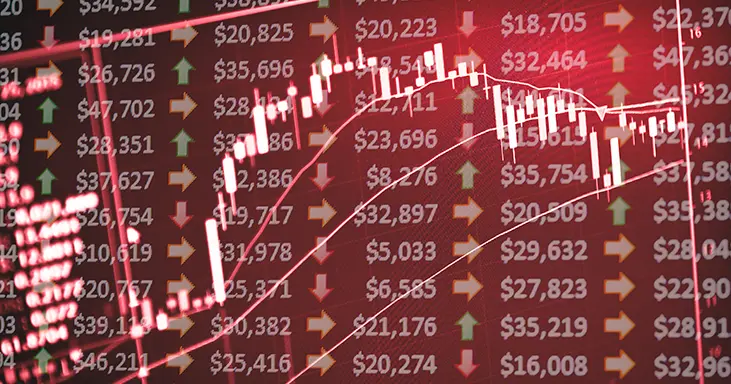


The Role and Impact of Spreads and Pips
Forex Fundamentals
Introduction to Spreads and Pips
Understanding the dynamics of spreads and pips is crucial. Spreads, the difference between the bid and ask prices, and pips, the smallest price move in exchange rates, are fundamental concepts every trader must grasp to navigate the currency markets successfully.
These elements not only determine the initial costs but also impact the potential profitability of trades. By mastering how pips and spreads work, traders can enhance their risk management strategies and optimize their trading decisions, ultimately leading to better-informed and potentially more profitable trading outcomes. In this introduction, we'll dive into why these concepts are pivotal for both seasoned and novice traders in the Forex arena.
Understanding Pips
Pips play a pivotal role in Forex trading, serving as the heartbeat of currency movements. A pip, which stands for \"percentage in point\" or \"price interest point,\" is the smallest price move that a currency pair can make. For most currency pairs, a pip is equivalent to 0.0001 of the currency rate, but for pairs involving the Japanese yen, it’s 0.01 due to the currency's lower value against the dollar.
Imagine you're trading the EUR/USD pair. If the pair moves from 1.1050 to 1.1051, that 0.0001 USD rise signifies a one pip move. This might seem minuscule, but when multiplied by significant trade sizes, the impact of pips on profitability becomes evident. For traders, understanding how to calculate pip value is crucial. It involves multiplying the size of your trade by the decimal pip change, thus determining the monetary value per pip.
This fundamental knowledge helps traders manage risk by setting precise stop-loss and take-profit levels, essential for crafting successful trading strategies. Pips are not just a measure of change; they are the linchpins of risk management and profitability in the whirlwind world of Forex trading.
Exploring Spreads in Forex Trading
Spreads are a critical factor in Forex trading, acting as the gateway between market entry and potential profits. In essence, a spread is the difference between the bid (buy) and ask (sell) price of a currency pair. This gap represents the transaction cost to the trader, which is why a tighter spread often signals less cost and more potential for profit.
Let's consider an example. Suppose you're looking at the EUR/USD pair with a bid price of 1.1050 and an ask price of 1.1052. The spread here is 2 pips. This means if you enter a trade at the ask price, the market would need to move at least 2 pips in your favor just to break even.
Forex spreads can vary widely based on several factors including market volatility, time of day, and economic events. During major economic announcements, spreads can widen significantly due to the increased market volatility. Understanding these dynamics is key for traders, especially those new to the forex markets, as it helps in strategizing entries and exits to optimize trading costs.
By keeping an eye on spreads, traders not only manage their trading expenses but also align their trading strategies with market conditions, enhancing their chances for profitability.
The Impact of Spreads on Trading Costs and Profitability
In Forex trading, spreads significantly affect both trading costs and profitability, serving as the invisible hand that guides financial outcomes. A spread—the difference between the buy and sell price—dictates the initial cost of entering a trade. For instance, if a trader faces a 3-pip spread on the EUR/USD pair, they start with a virtual loss of 3 pips that must be recovered through favorable market movement just to break even.
Consider this: tighter spreads generally mean lower costs and higher potential profitability. In periods of high liquidity, such as when major financial markets overlap, spreads typically tighten, presenting cost-effective trading opportunities.
Conversely, during major news releases or market turmoil, spreads can widen dramatically, increasing costs and risk. A trader's ability to anticipate and react to these spread fluctuations can be the difference between profit and loss.
Strategic traders monitor spreads closely, choosing their trading times and currency pairs based on predicted spread behavior. This awareness helps in managing transaction costs effectively, enhancing profitability in the highly competitive Forex market. Understanding and adapting to the dynamics of spreads is therefore essential for optimizing trading performance and achieving financial success.
Pips and Risk Management
In Forex trading, understanding pips is essential for effective risk management. Pips, as the smallest measure of price movement, directly influence the potential gains or losses of a trade.
For example, if a trader expects the EUR/USD pair to move favorably by 20 pips, setting a take-profit or stop-loss order around this pip movement can lock in profits or protect against larger losses.
Effective risk management revolves around the strategic use of pips. Traders often calculate the value per pip movement to determine how much market exposure they can afford without exceeding their risk tolerance. This calculation involves considering the trade size and the currency pair's volatility, allowing traders to set precise risk thresholds.
Moreover, by leveraging pips in their trading strategies, Forex traders can tailor their entry and exit points. For instance, if a trader identifies a consistent pattern where a currency pair moves an average of 30 pips during a particular trading session, they might set a stop-loss order just beyond this range to mitigate risk.
Thus, mastering pips is not just about measuring price changes; it's about using these measurements to make informed, strategic decisions that enhance trading outcomes and manage financial exposure.
Pips serve as both a unit of measurement and a tool for safeguarding investments, making them integral to any risk management strategy in the volatile Forex market.
Advanced Considerations in Forex Trading
Advanced considerations in Forex trading delve into the complex interplay of leverage and pip movements, which can significantly amplify both gains and risks. Leverage, a tool that allows traders to control large amounts of currency with a relatively small investment, magnifies the effect of pips on a trader's portfolio.
For instance, with a 100:1 leverage, a pip movement can either increase returns or escalate losses dramatically, depending on the currency pair's direction. Understanding the impact of leverage on pip value is crucial. If a trader goes long on EUR/USD with a standard lot using significant leverage, each pip movement can have a substantial dollar effect on the total position.
This requires a deep understanding of market conditions and an aptitude for predicting currency movements accurately.
Furthermore, seasoned traders analyze pip movements to spot trends and make predictions. They utilize historical data and real-time analysis to gauge potential pip volatility, which aids in more strategic entry and exit points, enhancing the potential for profitability.
This level of analysis involves not just looking at the numbers but interpreting broader economic indicators and their potential impact on currency values.
These advanced strategies underscore the importance of a meticulous approach to Forex trading, where every pip counts and knowledge is the trader's most valuable asset.
FAQs on Pips and Spreads
How many pips is 1 spread?
The term \"spread\" refers to the difference in pips between the bid price and the ask price offered by a broker for a currency pair. One spread does not equate to a fixed number of pips; instead, it varies depending on the broker and the market conditions. For example, if the bid price is 1.1050 and the ask price is 1.1052, the spread is 2 pips.
Is 1 pip spread good?
A 1 pip spread is considered very low and is usually offered on the most liquid currency pairs such as EUR/USD during high liquidity times like the major trading sessions. A lower spread is generally favorable for traders, as it means they pay less in trading costs. Therefore, a 1 pip spread is good, particularly for high-frequency traders who perform large numbers of transactions.
What is a 30 pip spread?
A 30 pip spread refers to the difference of 30 pips between the bid and ask prices of a currency pair offered by a broker. This is considered a very high spread and typically occurs in less liquid markets or exotic currency pairs. High spreads can significantly increase trading costs and are generally less attractive to traders.
How much is 100 Pips worth?
The monetary value of 100 pips depends on the size of the contract (lot size) and the currency pair being traded. For a standard lot in forex trading, which is 100,000 units of the base currency, 1 pip typically equals $10 when USD is the quote currency. Therefore, 100 pips would be worth $1,000. However, this value can vary if a different lot size or a different currency pair is used.



